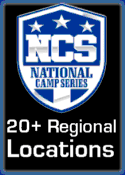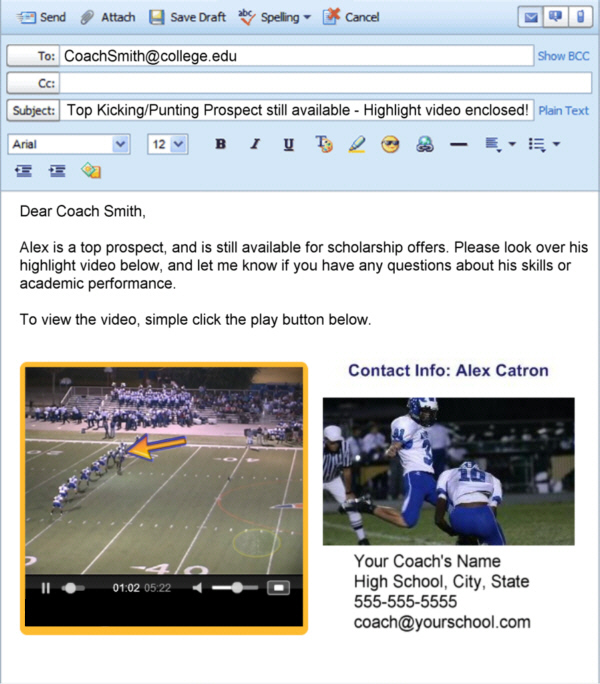|
GUEST EXPERT ARTICLE
In my first installment of this series on the recruiting process for kickers, punters and long snappers, titled "Recruiting Reality Changes with the Speed of Light" I discussed how technology, and social media, has changed the recruiting process dramatically, and those changes are soon to be overshadowed by even newer innovations. The trick is to take every advantage of these technological opportunities to gain an edge on the competition, but in so doing one needs to start with a overall plan.
I have had five sons of my own go through this process, and the methods and strategies I used were different for each one of them because I wanted to discover or create a better "mouse trap". I have also used what I have learned from those five experiments to help hundreds of others get discovered and eventually placed in a college football program.
The recruiting process, while it has some similarities with other football positions, is also quite unique from the other football positions, thus a different overall strategy is in order. I will be discussing most of the strategies that can or should be employed in a comprehensive plan for a football kicker, punter and long snapper.
First, before you set out to persue a college scholarship, make sure you have, or will have the necessary skills that put you in range to compete at that level.
Often, I hear from parents and players statements that are based in myths that are not reality. Getting a scholarship, and even a walk on slot on a college team is very competitive and difficult today, especially for kickers. It is simple economics, the supply of quality kickers coming out of the high school ranks continues to increase much faster than the demand for quality kickers by colleges. More kicking coaches are in the market training more kickers and the quaily of skilled kickers has increased tenfold. To best situate yourself to be competitive I recommend these initial Core Components to a successful campaign:
1). Find a very competant kicking coach with a solid reputation and strong college connections and train with him as often as possible.
2). Become a kicker and a punter, or a long snapper who plays another position.
3). Take the most rigorous courses you can in high school and get the best grades possible.
Lets look at why these so important that I mention these three components before any other strategies.
(1) Find a very competant kicking coach: Since I became an Associate with the National Camp Series back in 2006, I have had the honor of meeting many great kicking coaches from around the U.S. One thing that has resonated loudly in watching the kids perform at our camps is that the ones who perform the best in our evaluations are the kids who are trained by these coaches. These, ultimately are the same kids that get scholarships in college because their skill level is superior to those not being trained, and their kicking coaches are helping them get placed. Coaches who are affiliated with a network, such as the National Camp Series, have the advantage of helping eachother find schools for eachother's athletes. We routinely share information about colleges we know that are looking or help eachother find a home for a not yet placed athlete.
(2) Become a kicker/punter: This goes back to my economics law of supply and demand. The supply of good kickers is very high today, but the supply of good punters has not caught up yet. Most college coaches desire a combo kicker/punter guy so he can bring in or travel with fewer specialists. It is my obversation that the majority of the first kids to get offered are guys who are combo kicker/punters and they are good at both. The same principal applies to long snappers. Your stock value increases if you are capable of playing more positions than just one. This is true for college and the pros. The guys who play several positions and are good long snappers are more likely to get scholarship offers than a long snapper is who can't play another position at that level.
3) The third of the above Core Strategies sounds like a pitch from a guidance counselor ( which I am) but it still holds true for my athletes. The better your academic profile, the more opportunites you will have to be recruited. So many colleges have restrictions on who they can recruit because they have academic standards that demand well prepared student/athletes. The better the student athlete's transcripts are the more potential colleges they will qualify for and the more one's chances of getting a great education will be.
As good friend and colleague of mine, former NFL kicker, Michael Husted, frequently points out to his student-athletes that what they are doing is "leveraging their athletic skills to get an education". That clearly puts this into perspective as we get so hung up on the trappings of this process that we lose sight of our ultimate goal; To get that college education, in order to be able to have a better life. You are using your sports skills as a tool to help make that happen.
In part 2 of the Recruiting Labryrinth I will explore some of the ways to increase your visability in a very large and dark ocean starting with the freshman year and working through the senior year of high school. Stay tuned for "Becoming a Light Tower" Learn more about Tom Feely >>> |

|

 The Recruiting Labyrinth-part 1: The Core Components
The Recruiting Labyrinth-part 1: The Core Components


 Doug and Tommy's Frequently Asked Questions
Doug and Tommy's Frequently Asked Questions



